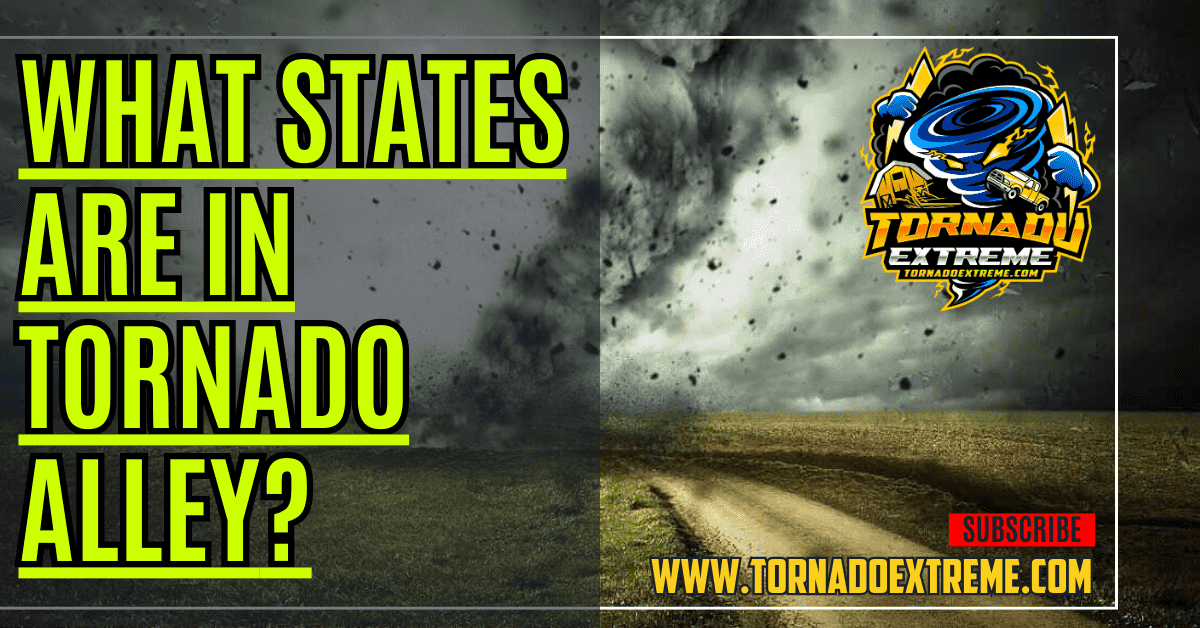What States are in Tornado Alley? Understanding Tornado Alley
Tornado Alley spans several states in America’s central region. The states in Tornado Alley are Texas, Oklahoma, Kansas, Nebraska, and South Dakota. This area experiences frequent, destructive tornadoes, marking it a hotspot for severe weather phenomena. Tornado Alley’s unique conditions create an ideal environment for twisters. Warm, moist air from the Gulf of Mexico meets cold, dry air from the north.
This air collision causes severe thunderstorms and tornadoes to form. The flat terrain in Tornado Alley also contributes to its high tornado activity. Open spaces allow wind patterns to create powerful, rotating storms called supercells. These storms often produce tornadoes. Good visibility across the flat landscape increases tornado sightings too. Tornado Alley’s geography and atmospheric conditions make it one of the world’s most tornado-prone regions.
In simpler terms, Tornado Alley includes parts of Texas, Oklahoma, Kansas, Nebraska, and South Dakota. The warm, humid air from the Gulf meets cold northern air here. This air clash produces storms that spawn tornadoes. The flat land allows for tornado formation and sightings, but changing patterns suggest that areas beyond the traditional Tornado Alley, like Alabama, are becoming more prone to these events. These factors make Tornado Alley extremely prone to twisters.
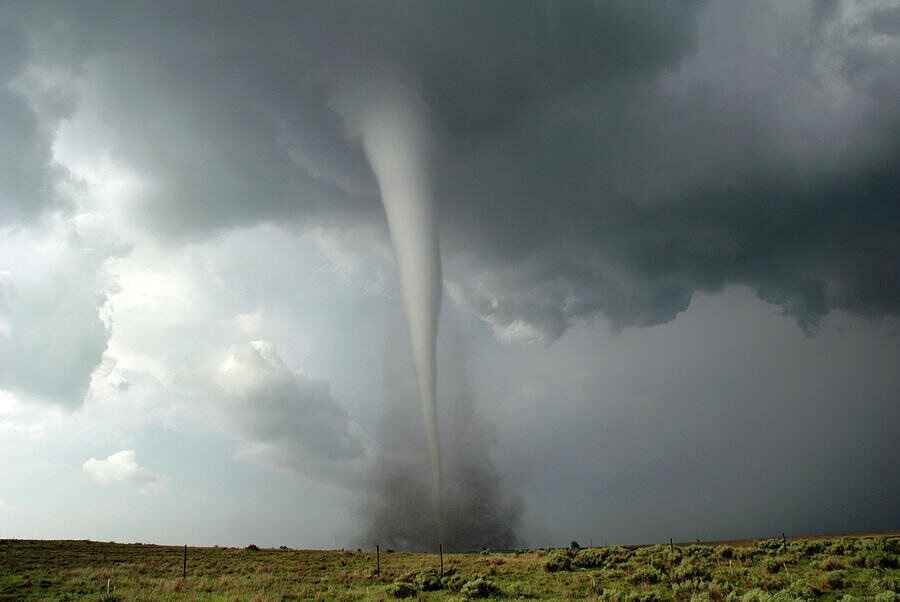
Definition of Tornado Alley
Tornado Alley is an informal term for an area in the United States with frequent tornado activity, but discussions on whether Tornado Alley is shifting are gaining traction. While not officially defined, Tornado Alley typically includes regions of Texas, Oklahoma, Kansas, Nebraska, and South Dakota. This area experiences a high number of tornadoes due to its unique meteorological and geographical characteristics. Warm, humid air from the Gulf of Mexico meets cool, dry air from the Rocky Mountains. This creates conditions favorable for severe weather events and tornado development.
Tornado Alley has been a crucial area for studying tornadoes. Meteorologists and storm chasers have focused on this region to understand these destructive forces of nature. It’s a warning to residents to stay alert during tornado season and prepare for emergencies. Even after extensive research, there’s still much to uncover about the complex factors behind tornado formation and intensity in this unique area.
Scientists keep exploring Tornado Alley’s intricate dynamics to better predict and comprehend tornadoes. They’ve pinpointed key factors contributing to the region’s tornado occurrences. Warm, humid air from the Gulf of Mexico clashes with cool, dry Canadian air, creating stark temperature and moisture contrasts. This clash sets the stage for severe thunderstorms capable of spawning tornadoes.
Tornado Alley’s flat landscape fosters storm development too. With minimal topographical barriers, winds flow unobstructed over vast distances, allowing storms to organize and intensify easily. This permits the formation of mesocyclones – large rotating updrafts within severe thunderstorms – crucial for producing tornadoes.
Wind shear is when wind’s direction or speed changes at different heights. This makes great conditions for rotating storms to form.

What States are in Tornado Alley? Geography and Boundaries
Tornado Alley’s geography and boundaries are key for defining this region stretching across America’s central states. Bound by Rocky Mountains westward and Appalachians eastward, it includes parts of Texas, Oklahoma, Kansas, Nebraska, South Dakota, Iowa, and Minnesota. This area’s fascinating because its natural features let warm, wet air from Gulf of Mexico meet cool, dry air from Canada – ideal for tornado formation.
But tornadoes don’t respect Tornado Alley’s map boundaries. Recent patterns show they’re expanding eastward into states outside this zone due to shifting climate factors. Understanding geography’s nuances illuminates why regions are tornado-prone – highlighting geography and weather’s complex relationship shaping our environment.
The Great Plains, often called Tornado Alley, is one region experiencing high tornado frequency across states like Texas, Oklahoma, Kansas, and Nebraska. Unique conditions in this area create perfect tornado formation situations.
The land makes tornadoes happen more. It’s flat with wide open spaces in the Great Plains. This lets dry cool air from Canada crash into warm wet air from the Gulf of Mexico. When these two very different airs meet in Tornado Alley, it creates huge thunderstorms and maybe tornadoes.
Mountains like the Rockies change how the weather works in Tornado Alley too. They block storms from the Pacific Ocean from moving east there. This means the warm wet air stays near the ground before hitting the cool dry air from the Arctic. And that can start tornadoes.

States within Tornado Alley
Tornado Alley is a U.S. central region known for its frequent, destructive tornadoes. It stretches from Texas up to North Dakota. States like Oklahoma, Kansas, Nebraska, and Iowa are part of it, but research suggests that Tornado Alley is shifting towards Dixie Alley, including states like Alabama. Though they’re neighbors, each has unique tornado risks from the land and weather there.
Oklahoma sees the most tornadoes often. Its flat ground and Gulf’s humidity create perfect conditions for severe storms and twisters, making it one of the world’s most tornado-prone places. Meanwhile, Kansas earns the “tornado capital” name for its tornado peak season frequency. Each Tornado Alley state fascinates meteorologists and storm chasers due to its specific tornado geography and weather.
These areas show that while part of Tornado Alley with extreme storms, each has unique traits making them prone to tornadoes. Learning these nuances deepens our respect for nature’s might and stresses preparedness and disaster plans to protect people and property there.
See also: Which State Has the Most Tornadoes and Why It Matters
Which US State has the Most Tornadoes per Year?
Texas faces the most tornadoes yearly, earning its tornado capital title. Averaging 140 twisters annually, Texas battles these weather events significantly. The state’s massive size, diverse landscapes, and changing weather patterns create ideal tornado conditions.
Kansas also endures frequent, intense tornado activity, a significant factor in the yearly tornado outbreak statistics. Known for vast plains and volatile weather systems, Kansas averages 80 twisters yearly, making it another Tornado Alley standout. This highlights the region’s susceptibility to these destructive natural occurrences.
These facts reveal certain states face higher tornado risks due to specific geological and meteorological factors. Understanding these patterns informs disaster preparedness and emphasizes nature’s awe-inspiring power within Tornado Alley.
Besides Kansas, other Tornado Alley states also confront major tornado threats. Oklahoma, notorious for tornado activity, often tops states with the most twisters annually.
While Tornado Alley tornadoes mostly strike during spring and early summer when warm moist air collides with cooler dry air masses, severe weather can occur anytime, adding unpredictable danger to life there.
These tragic occurrences can’t be trivialized. Tornadoes have destroyed many lives. They’ve wrecked homes, structures, and whole communities across Tornado Alley. The ruins are sobering proof: preparedness and effective disaster response plans are vital to reducing such natural disasters’ devastation.
It’s unsurprising, given their frequency and force, that research bodies like NOAA (National Oceanic and Atmospheric Administration) vigilantly track Tornado Alley’s tornado patterns.
What are Tornadoes?
Tornadoes or twisters are violently rotating air columns extending from thunderstorms groundward. These intense natural events cause destruction through gale-force winds and hurtling debris. When warm moist air collides with cooler dry air, instability and powerful thunderstorms form. As these storms rapidly rotate, funnels descend earthward as tornadoes.
Tornadoes’ lethality stems from their capriciousness and swiftness. Unlike hurricanes or quakes, they develop rapidly with scant warning. Their erratic paths and devastating force render them among nature’s most feared phenomena worldwide.
Grasping tornado genesis and behavior scientifically is key to enhancing early alerts and developing strategies to minimize communities’ tornado impacts. By scrutinizing these awe-inspiring yet perilous events, scientists aspire to augment tornado forecasting, tracking, and mitigation capabilities.
Weather forecasters check atmospheric details like temperature, moisture, winds, and pressure to spot areas with strong thunderstorms. Those storms can create spinning updrafts called mesocyclones that lead to tornadoes, which are pivotal during a tornado outbreak. Ground-based sensors also help provide local data. High-tech radars scan the skies watching for the mesocyclone patterns.
Once a tornado forms or is imminent, tracking its precise location and movement gets very important. Meteorologists use special Doppler radars to see real-time paths and speeds. Officials can quickly send warnings through systems like sirens or phone alerts to people in threatened areas.
However, scientists struggle to increase lead time – the period between first warning and tornado arrival. The goal: give people more time to find shelter or evacuate if needed before impact.
See also: What is a Rain Wrapped Tornado? Severe Weather
What Causes Tornadoes?
Tornadoes captivate yet devastate; grasping their origins is key. Most strike the “Tornado Alley” region crossing Texas, Oklahoma, Kansas and nearby central states. A prime cause: warm, humid Gulf air clashing with cool, dry Canadian air. That instability fuels intense thunderstorms spawning tornado funnels.
Tornadoes are unpredictable weather events. Their formation involves complex atmospheric conditions. One key factor is rotating columns of air within thunderstorms. These spinning columns gain strength, becoming devastating tornadoes. However, predicting exactly when and where one will strike remains challenging. The interplay of atmospheric forces is intricate.
RehumanizeIn the end, uncovering the precise tornado formation mechanisms is meteorologists’ and scientists’ main focus. By understanding what causes these powerful phenomena, we enhance disaster preparedness abilities in Tornado Alley and beyond.
Grasping and foreseeing tornado formation isn’t simple. Meteorology advancements notwithstanding, many unknowns about this destructive weather persist. Various atmospheric conditions spawn tornadoes, complicating anticipation.
Wind shear contributes to tornado development, especially when warm air meets cold air at high altitudes. Wind direction or speed changes with height create environments ripe for tornadoes. Yet the precise wind shear threshold favoring formation remains uncertain.
The potential for tornado formation is amplified by atmospheric instability. Warm, moist air near Earth’s surface clashing with cooler air above creates an unstable environment. Thunderstorms, breeding grounds for potentially severe weather like tornadoes, thrive in these conditions. Scientists study advanced modeling and data analysis techniques to better predict and measure atmospheric instability, crucial for forecasting the severe weather events of 2023.
Why do Tornadoes Occur in Central States?
Tornadoes strike central states like Oklahoma, Kansas, Nebraska, and Texas frequently due to geographic factors and weather patterns. This region, dubbed Tornado Alley, lies where warm, humid air from the Gulf of Mexico meets cool, dry Rocky Mountain air. Their collision fosters conditions prime for severe thunderstorms spawning tornadoes, with Alabama in Dixie Alley becoming increasingly affected. Moreover, these states’ flat terrain allows unobstructed air mass movement, compounding tornado risk. The confluence of ideal geography and meteorology within Tornado Alley renders central states especially tornado-prone compared to other U.S. regions.
Understanding how geography and weather systems align to create the perfect tornado-breeding environment sheds light on the heightened tornado activity plaguing central states, and hints at changes observed in 2023 versus data from 2021. The flat terrain coupled with the clash of contrasting air masses from the Gulf and Rockies sets the stage for the violently rotating thunderstorms that spawn these destructive forces of nature.
The region’s geographical features combine with weather patterns to create tornado breeding grounds. Warm, humid Gulf air meets cool, dry Canadian air along a frontal boundary across the states. This air mass collision fuels intense thunderstorms, crucial for tornado formation.
The central states lack significant geographical barriers like mountains or large water bodies. Storms can thus build and intensify unobstructed, often becoming powerful, long-lasting supercells capable of spawning tornadoes.
Additionally, the wide open terrain with minimal obstructions allows severe weather systems to move freely. Over vast distances, developing thunderstorms can efficiently gather energy by tapping into warm moist air. These conditions provide ample rotating updrafts within severe thunderstorms—a critical tornado precursor.
See also: Green Sky Tornado: Why Does the Sky Turn Green?
Tornado Season
Tornado season heightens alerts for Tornado Alley residents. Despite forecasting advances, the raw, unpredictable power and lasting physical/emotional community impacts remind of nature’s awesome, sometimes destructive, force.
Tornado season is stressful for those in Tornado Alley. The storms are scary, but dealing with the aftermath is tough too. Homes get wrecked. People suffer trauma. Yet these communities show great resilience. As we learn more about tornadoes, we must provide better support for impacted areas.
In summary, tornado season reminds us nature controls our fate, not infrastructure. By studying tornado patterns and risks, we can safeguard lives and property when these turbulent events strike.
Seasonal Data For Each Tornado Alley State
Tornado Alley sees frequent tornadoes in the central U.S. Seasonal data shows state-specific patterns. Oklahoma has peak tornado season April-June, with May as the busiest month, often seeing a high number of tornadoes. Texas encounters more tornadoes April-June. Kansas faces a tornado surge May-June, averaging 12 per month then. Nebraska has the most tornadoes May-July, peaking in June. Iowa’s season runs April-July, but late spring and early summer are worst.
The varied seasonal data across Tornado Alley underscores the need for tailored plans in each state to withstand these destructive storms. Local readiness and response are crucial to protect communities when nature unleashes its fury.
Tornado season brings unique patterns for states in Tornado Alley. Effective response requires understanding peak activity months. All states share the need for vigilance during this time.
In Kansas, tornadoes spike in May and June. On average, 12 occur each month. Residents must stay alert, as severe storms can rapidly form. Safeguarding involves designated shelters, heeding weather alerts, and emergency kits.
Further north, Nebraska’s tornado peak spans May to July. June sees the most activity statewide. Nebraskans should monitor conditions closely, with clear plans for severe weather.
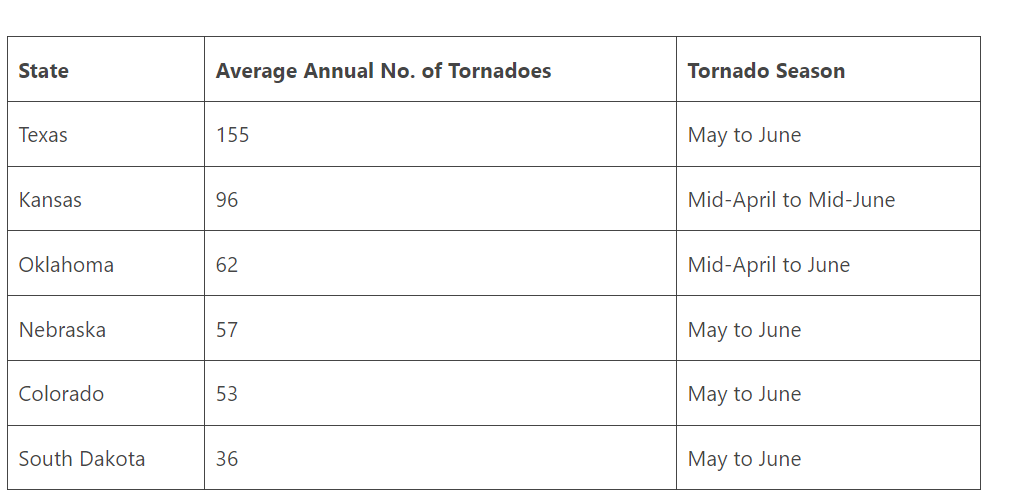
How is Tornado Strength Rated?
The Enhanced Fujita (EF) scale measures tornado strength based on damage. Rankings range from EF0 (weakest) to EF5 (strongest). Meteorologists assess structural and vegetation damage to estimate wind speeds, then classify accordingly.
The rating system looks at things like building materials, construction quality, and how much destruction happened. The EF scale gives a standard way to label tornado strength. This helps scientists understand these extreme weather events better and improve their ability to predict them accurately. Knowing how tornado strength gets rated is crucial for communities that could be affected. It helps them get ready for potential impact and take needed safety steps in high-risk areas.
In areas with high tornado risk, it’s really important to understand the EF scale and how tornadoes get classified by strength. By knowing the potential damage that different tornado categories can cause, communities can put appropriate safety measures in place. They can also evacuate residents if necessary.
The Enhanced Fujita (EF) scale has six categories from EF0 to EF5, each indicating increasing intensity levels. An EF0 tornado typically causes minimal harm, with winds around 65-85 mph (105-137 km/h). An EF5 tornado is considered the most severe, with winds surpassing 200 mph (322 km/h).
To determine a tornado’s rating on the EF scale, meteorologists carefully survey affected areas after the storm passes. They examine various structures like homes, buildings, trees, power lines, and other infrastructure to assess the destruction level caused by wind speeds and the number of tornadoes.
Frequency and Severity of Tornadoes
The frequency and severity of tornadoes in the United States have captivated and concerned people for a long time. While tornadoes can happen anywhere, certain regions experience them more often and with greater intensity. The infamous Tornado Alley, including states like Texas, Oklahoma, Kansas, and Nebraska, is known for having many tornadoes. This is because warm, moist air from the Gulf of Mexico clashes with cool, dry air from Canada, creating ideal conditions for severe thunderstorms that frequently spawn tornadoes.
Some recent research studies revealed intriguing facts. They suggest Tornado Alley’s traditional borders may shift. Climate change impacts appear linked to altering severe storm patterns, including the frequency and intensity of tornado outbreaks. This influences tornado formation dynamics. So, certain regions outside historical Tornado Alley now face heightened tornado risks. Meanwhile, other areas see reduced tornado frequency. Such emerging trends underscore an evolving tornado understanding. Regardless of location, staying informed about severe weather remains crucial.
As violent natural phenomena understanding continues, preparedness proves essential everywhere. Individuals can minimize their vulnerability through awareness of evolving weather patterns. Being proactive against potential threats safeguards against these powerful yet unpredictable nature forces.
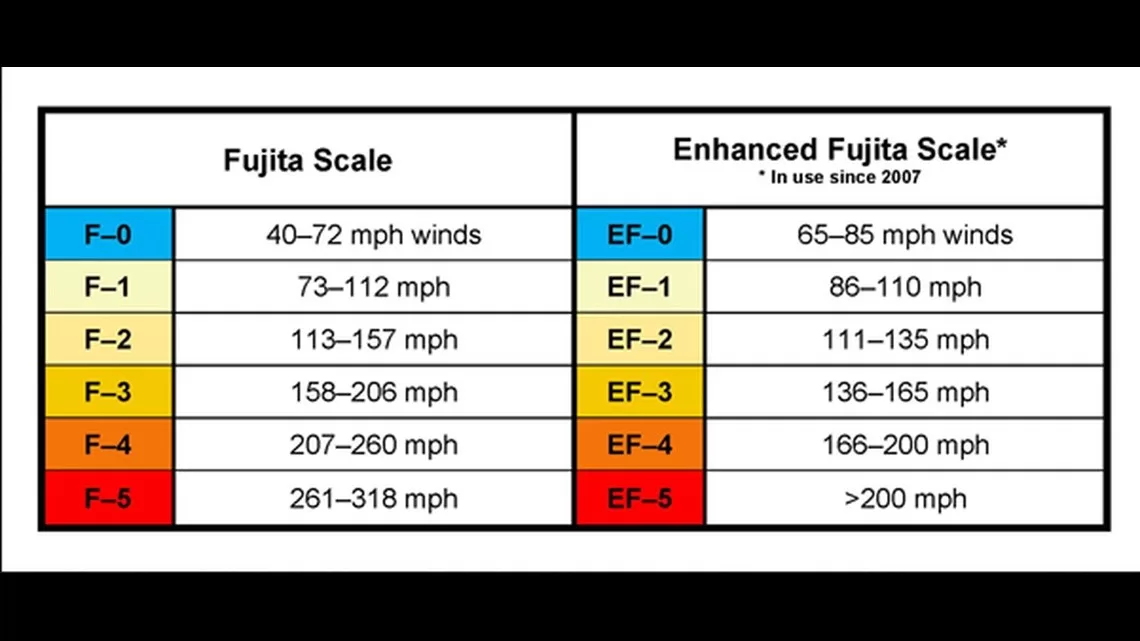
Impact on Communities and Economy
Tornadoes’ community and economic impacts loom immense. Beyond instant home and infrastructure destruction, tornadoes inflict long-term displacement. Psychological trauma scars affected communities. Economically, businesses face shutdown or relocation – causing job losses, local tax revenue declines.
Rebuilding and recovery impose heavy government resource and household burdens. Ripple effects transcend impacted areas, disrupting supply chains and regional economic stability. Prioritizing disaster preparedness and resilience-building mitigates cascading impacts. Fostering community solidarity and support alleviates some long-term social, economic repercussions.
Communities can better withstand and recover from natural disasters by investing in disaster preparedness and resilience-building measures. This includes implementing early warning systems for timely evacuation. Improving infrastructure to withstand extreme weather events, and establishing robust
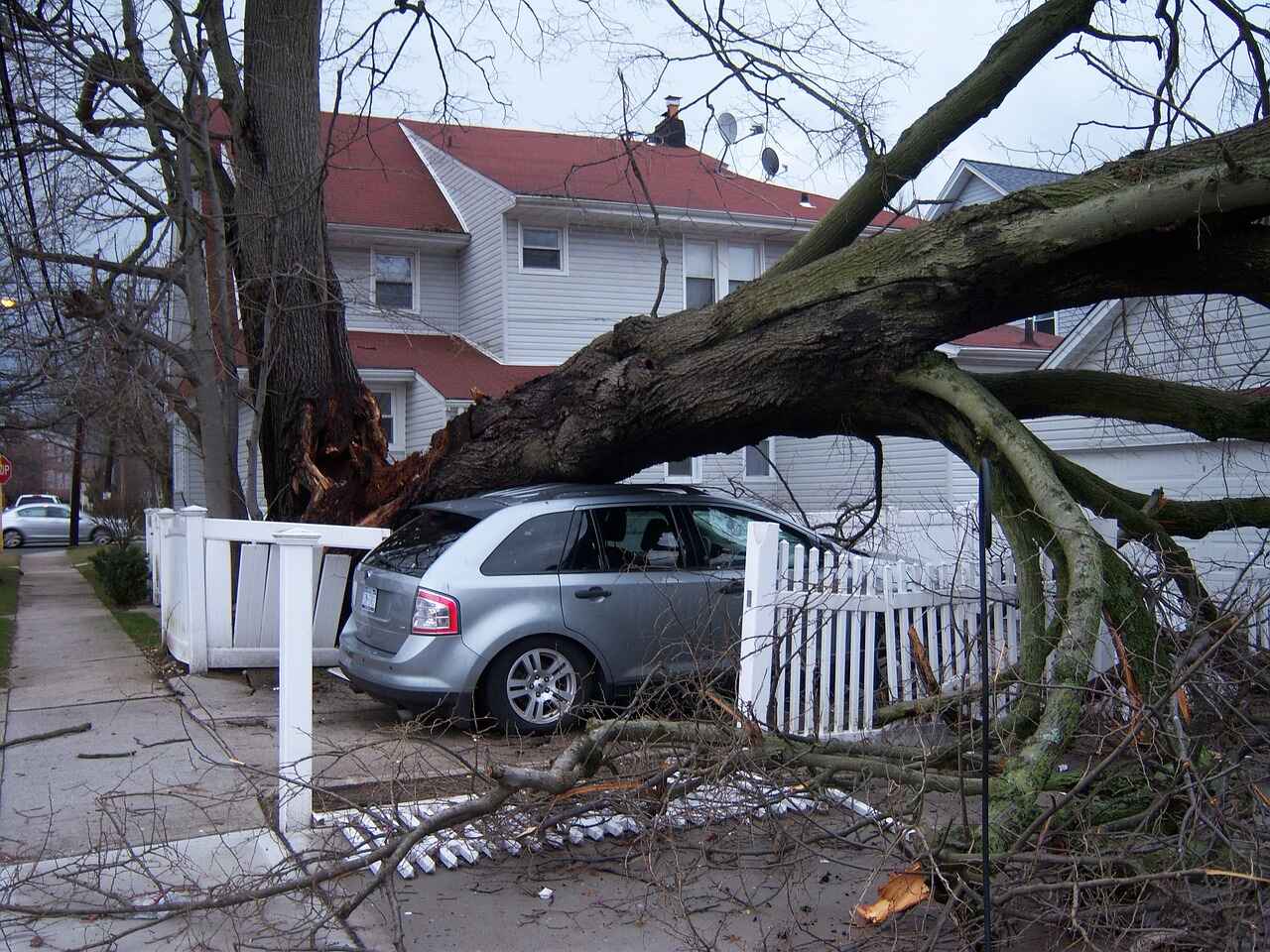
Conclusion: Importance of Preparedness and Awareness
All things considered, it’s crucial to be prepared and well-informed when living in regions prone to tornadoes. These natural disasters are unpredictable and extremely dangerous, so residents should always be ready to react quickly. By staying updated with weather alerts, packing emergency kits, and having a clear plan in place, individuals can keep themselves and their families safe.
Besides personal preparedness, building a community that is resilient in the face of disaster is equally important. Encourage your neighbors to share resources, communicate effectively during emergencies, and support one another. The more you help each other out, the less damaging these tornado events will be overall. So take the time to build strong networks within neighborhoods—trust me when I say it’ll make all the difference.
By recognizing the severity of living in Tornado Alley states and taking proactive measures to stay informed and connected, individuals can better protect themselves from these catastrophes. Remember that you’re not alone in this fight; support your neighbors as they support you!

